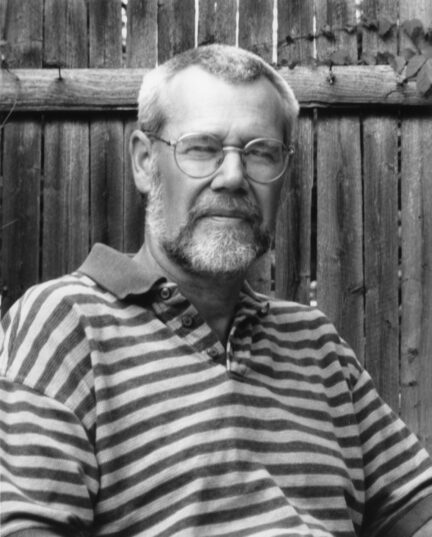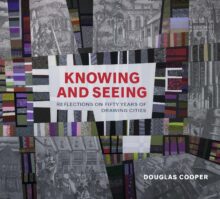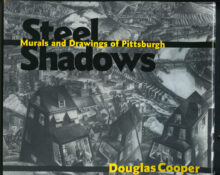
Douglas Cooper
Douglas Cooper is a Pittsburgh-based muralist who combines topography, story, history and memory into panoramic civic murals, some up to 200 feet-long. Typically, he works with local residents to incorporate their lives into these works, often with drawings in their own hands. Over the years he has collaborated with photographers animators and fabric artists in creating murals in Frankfurt, New York, Philadelphia, Pittsburgh, Qatar, Rome, San Francisco, and Seattle. His drawings have been exhibited in individual gallery shows in Cologne, New York, Pittsburgh, Seattle, and Washington D.C. Cooper teaches hand drawing at the School of Architecture at Carnegie Mellon and he is the author of two books: Drawing and Perceiving and Steel Shadows.
Knowing and Seeing
Reflections on Fifty Years of Drawing Cities
In Knowing and Seeing, muralist Douglas Cooper reflects on his long career as a muralist in various cities around the world. Part memoir and part an examination of his art, Cooper looks back on his half-century career from two points of view. First, through personal anecdotes on site sketches and finished works, and secondly, on the intellectual roots of the works. Though the core ideas of his work began in Pittsburgh, Cooper has exhibited work and produced murals, up to 200 feet long, in Cologne, Rome, San Francisco, Seattle, Qatar, Frankfurt, Philadelphia, New York, and Washington DC.
Memory has been a recurring theme in his art. All of Cooper’s works are driven by a desire to combine his conception of place with his perception of it—knowing and seeing. Knowing and Seeing features personal essays and more than 240 color images, including early Christian and Renaissance paintings as well as contemporary murals and other illustrations of Cooper’s unique work.
Steel Shadows
With Steel Shadows, you don’t have to visit exhibition halls at Carnegie Mellon University or the John Heinz History Center to enjoy Douglas Cooper’s unique, realistic and highly personal images of Pittsburgh. Steel Shadows brings his large charcoal and paper art home to you.
Cooper details the inspiration for his artistic vision, as well as the formal properties of his art and how it relates to architecture. The book features double-page spreads of his murals, his essay, and excerpts from Pittsburgh authors telling the stories of the city’s ethnic and eclectic style of neighborhoods, combining details of bridge building and steel making with poetry, historical accounts, and stories of the daily lives of Pittsburghers, all set against the backdrop of the city’s raw industrial landscape.
Steel Shadows is a book for students of art, architecture, urban studies, and oral history. Most of all, it is a book to share with friends and family, and a book to rekindle memories of this former steel town.


